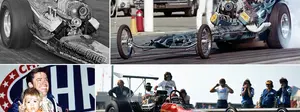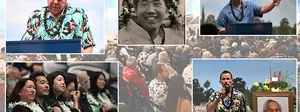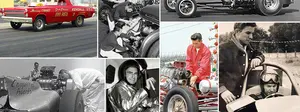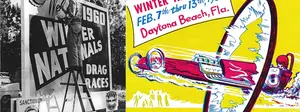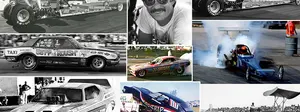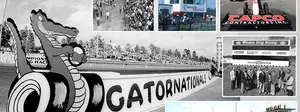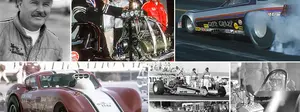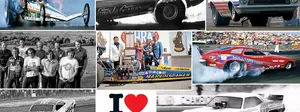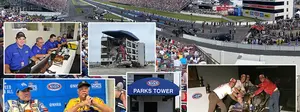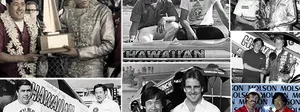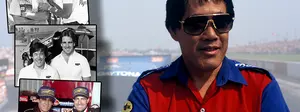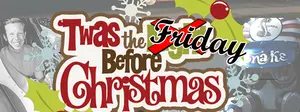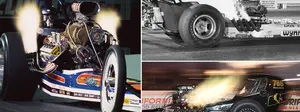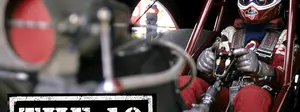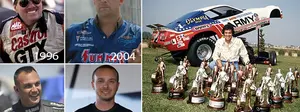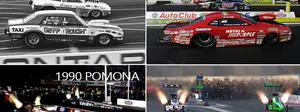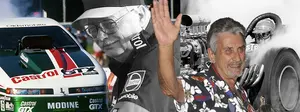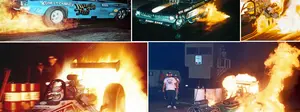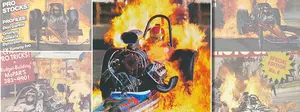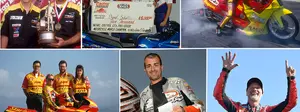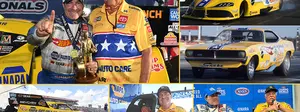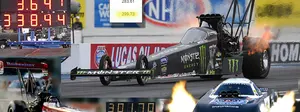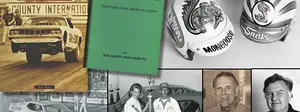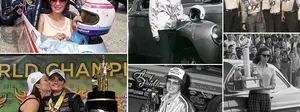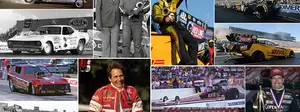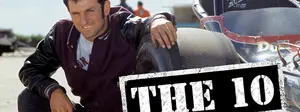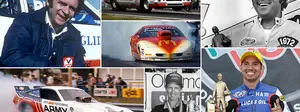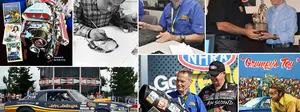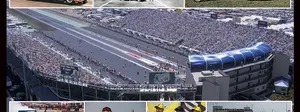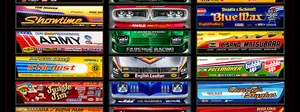Remembering Larry Dixon Sr.

In NHRA annals, the photo is pretty iconic. Larry Dixon Sr. is smiling in the Pomona winner’s circle in 1970, clutching his NHRA Winternationals Top Fuel Wally in one hand and 3-year-old son Larry Jr. in the other, and the towheaded little tyke, who would grow to not only follow his father into the Top Fuel cockpit but become a three-time world champion, is flashing the V-for-Victory sign so prevalent in that era.
It could easily be a Norman Rockwell painting, that deep tie between a father and son, bound together by a common love, and for all 57-plus years that Larry Jr. has walked this planet, it was there. We lost Larry Sr. two weeks ago at age 84, but as his son will tell you, his dad lived enough lives for 10 people.
Before his dragstrip heroics, the senior Dixon was a Southern California street-racing immortal on legendary Van Nuys Boulevard in the late 1950s in a ’55 Chevy. He went on to drive blown gassers and early fuel dragsters and fuel altereds and then one of Southern California’s iconic Fuel Roadsters, the Fireside Inn entry, which was basically a roadster body attached to the chassis of a Top Fueler.
From there it was on Top Fuel cars — Darryl Greenamyer’s Smirnoff Special and the Howard Cams Rattler of Danny Porche and the Johansen family chief among them — before he and wife Pat went out on their own with the car that would win the ’70 Winternationals — the last front-engine car to take Top Fuel honors in Pomona.
When everyone else transitioned to rear-engined machines, Dixon was there with a machine that eventually became the only Chevy-powered car to crack the elite 16-car field that comprised the legendary Cragar 5-Second Club.
“I don't know what more he could have done in his life that he didn't already do,” said Larry Jr. “You can talk about his time with that ‘55 Chevy, and that would have made any person's life; somebody could have lived on those laurels for the rest of their life, but not him. And then he had the time with the Smirnoff car and the Rattler and the Fireside Inn and then the Chevy car. He had so many lives. Every decade, he had something that would make a person's career, and for him, that was just him. He loved everything he did. He didn't have any regrets. I just feel lucky being his kid.”
THE ‘55

Dixon’s green street-killer ’55 Chevy reportedly was the inspiration for Bob Falfa’s wicked black ’55 in the car-culture film phenomenon American Graffiti, and while many of the characters were based on people that director George Lucas knew in Northern California, two of the co-screenwriters grew up in “the Valley” and knew of the reputation of Dixon’s ’55 and probably used that as the basis for Falfa’s king of the street car ("Ain’t he neat?”). Dixon Jr. also believes that the film’s hero, John Milner with his bright yellow ’32 Ford coupe, was based on Burbank Road Kings member Tom Jandt.
“When I found that out, I got kind of geeked out about it because this movie is legendary, but when I talked to my dad about it, it literally wasn't a big deal to him,” he said. “That was just his way.”

Van Nuys Boulevard was also where he met his future wife, Pat. “I chased him down Van Nuys Boulevard and practically ran him off the road,” she told NHRA National Dragster in 1975. “I wanted to date him so bad I would have gone to great extremes.”
The ’55 was later sold and went through some other famous hands, including Funny Car drivers Jim Adolph and Dale Pulde, but Dixon had already moved on.
GOING LEGIT
When Dixon finally went legit on the dragstrip – purportedly because he lost his California driver’s license after too many midnight speed soirees – he ran a badass blown Willys and then a strip-based ‘55 before finding his true calling in dragsters.
The blown Chevy from those two cars ended up in the framefrails of influential car owner “Fat Jack” Bynum’s dragster and then a fuel altered that he rolled seven times at fabled San Fernando Raceway after the throttle stuck.
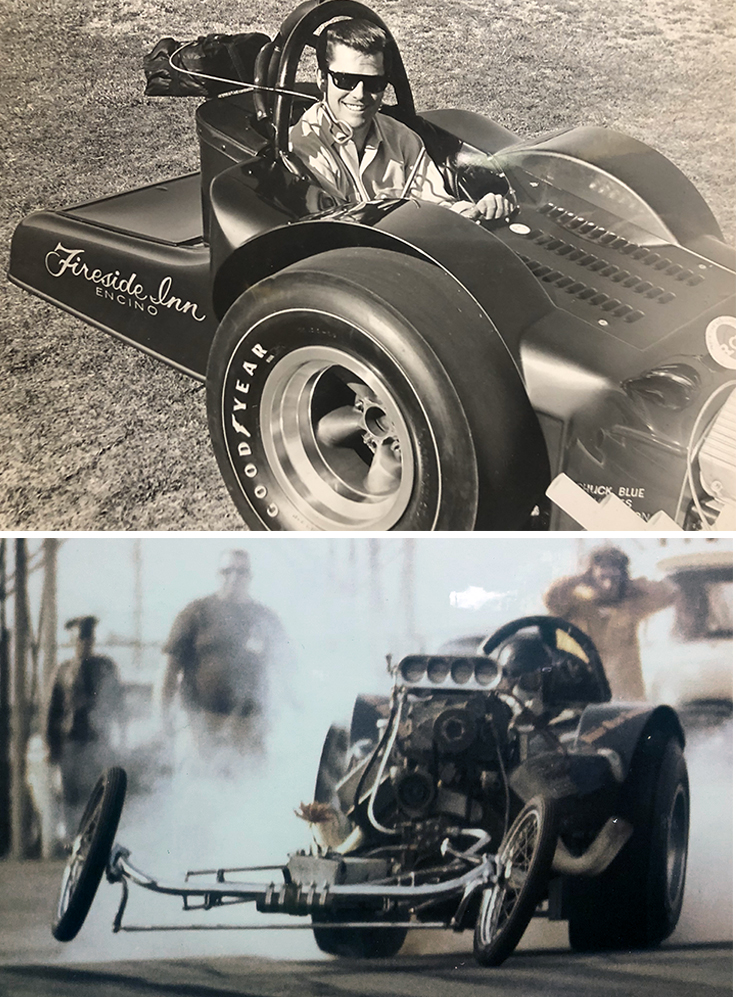
Dixon’s first major impact on the dragstrip was probably in the Fireside Inn AA/Modified Fuel Roadster, a roadster/dragster hybrid that ran in the sixes and even won Top Fuel — against conventional cars — for seven straight weekends at San Fernando Raceway.
Dixon also drove the Smirnoff Special Top Fueler, a car that he was reunited with decades later when it was resurrected as a Cacklefest car.
TOP FUEL SUCCESS
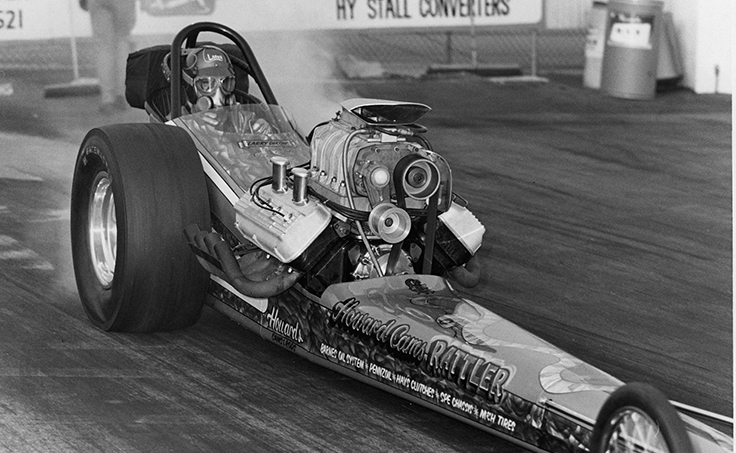
After hooking up with Porche and the Johansens with the Howard Cams Rattler, Dixon began to become a regular winner in 1969. He was the low qualifier at the Winternationals and won the Orange County International Raceway PDA meet and the Hot Rod Magazine Championships at Riverside Raceway. He also was the No. 2 qualifier at the NHRA U.S. Nationals, where he went three rounds before breakage forced him to the sidelines.
In 1970, Dixon went out on his own in a Roy Fjastad-built dragster that bore his name and that of Pat, who supplemented her husband’s income as an engine builder by babysitting during the day and polishing brake shoes for a local business at night.
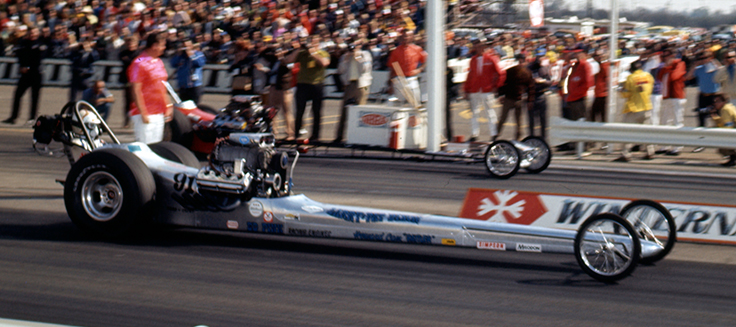
He qualified their lettered-but-still-unpainted new car No. 3 in the 32-car Winternationals field with a 6.78, behind only Gerry Glenn and the killer Schultz & Glenn car (6.74) and Dick Kalivoda’s Speed Equipment Wholesale Joker (6.77), then defeated Jim Paoli, a no-showing James Warren, Ronnie Hampshire in the Caspary-Waterman rail, and red-lighting Tommy Ivo to reach the final, where he defeated Tony Nancy, 6.86 to a troubled 7.48.
THE PHOTO

There’s a couple of different angles of the photo from the 1970 Winternationals winner’s circle, including the one that begins this column and the one above, but Dixon Jr. was just 3 and doesn’t remember that touchstone moment.
“I don't specifically remember that, but there were so many weekends that you went to the races, and he won, and you got a trophy, so you don't differentiate one from the other,” he said. “It would be neat if I remembered it, but I don't. Fortunately, we've got the footage from Wide World of Sports, and I definitely get to relive it. I think my first real memory is from the next year [1971] when he broke a crankshaft and crashed at Lions.”
FIVE-SECOND FAME
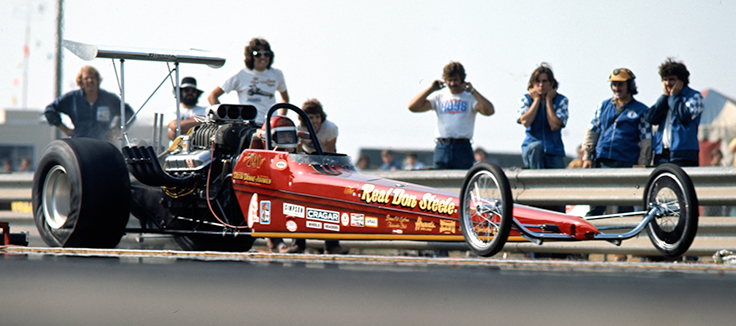
In that final-round crash while racing Don Moody, Dixon suffered burns to his face, a broken leg, and a broken finger, and when he returned to Top Fuel in 1973, it was in a rear-engine car in partnership with Rod Dunne and with backing from legendary Los Angeles DJ “The Real Don Steele.” The dragster initially was Chrysler-powered, but after Jim Bucher’s runner-up in his Chevy-powered entry at the 1973 NHRA Gatornationals, they switched to budget-friendly Chevrolet power and made history as the only Chevy-powered dragster in the Cragar 5-Second Club after a pass of 5.94 at the 1973 Supernationals that made him member No. 7 of 16.
Dixon drove the car through the 1976 season — a memorable highlight/lowlight being the immense blower explosion on the starting line at Irwindale Raceway in the final round of the first 5-Second Club race in January 1974 — and then finished out his career driving the new Top Fueler for Southern California potato magnate Larry Minor in 1978 and ’79.
“I had gone quick and fast, won races, and had a lot of fun, but decided in 1980 that I had had enough drive time,” Dixon told National Dragster in a 1994 interview.
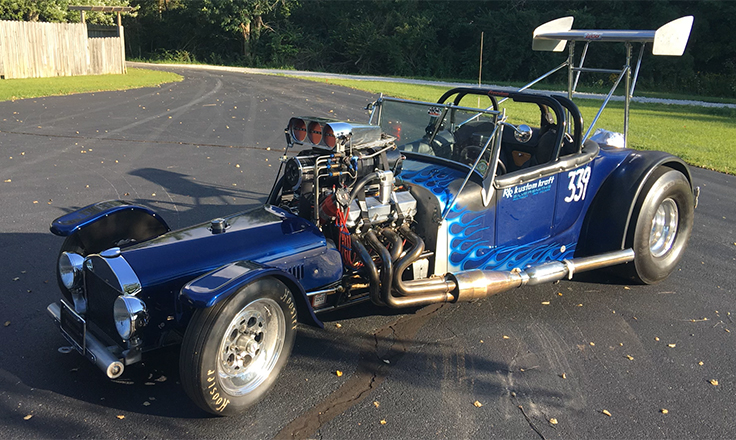
Dixon retired from racing and took up silversmithing as a hobby and later moved back east to be near his son and his grandchildren in Indiana, where he lived until his passing but, true to his nature, was involved in cars until the very end. To satisfy his Need for Speed, he built a street roadster with a blown and injected alcohol-burning powerplant.
“He had a lot of buddies that he’d hang out with, and they had a cruise night at the Lowe's in Avon [Ind.], and he was still Larry Dixon with the baddest car on the block,” said his son.
NITRO IN THE VEINS

Growing up as the son of a Top Fuel racer, and a successful one at that, must have been thrilling, right, Larry?
“Honestly, at the time, I thought every kid had a Top Fuel car in their family garage, and that after school on Fridays you go to Irwindale or Orange County, and that's just what I knew,” he recalled. “It was just going to the races with him, and that was a ball every weekend. I don't have to tell you how good the racing was back then in Southern California. I literally thought everybody had that same thing all over the country. Now I feel lucky that I grew up in the time I did, and my dad said that he felt lucky growing up in the time he did because he had San Fernando [Raceway] and Van Nuys Boulevard, and cruising Bob’s [Big Boy restaurant in North Hollywood, home base to the famed Burbank Road Kings]. All of his friends had cars that they cruised, and back then two or three buddies could get together and run a Top Fuel car.
“When my dad worked at Ed Pink’s, I’d ride my bicycle over to the shop, and a lot of teams had their cars there. I remember detailing Shirley Muldowney’s Mercedes there. I was locked in on drag racing. Ever since I was about 4, all I ever wanted to do was drive a Top Fueler. I guess the difference between me and him was he liked doing it as a hobby. He liked racing on the weekends; he really dug eight to five and then raced on weekends, and that's what he did. Me, I'm watching all these other people like ‘Snake’ [Don Prudhomme] and ‘Mongoose’ [Tom McEwen] and Roland [Leong], and they're not going back home or to school or to work. They’re going to the next race. I was like, ‘Man, if I can somehow do that, that would be cheating the system.' ”
Dixon Sr. got to proudly see his son follow him into the business and begin his Top Fuel career with Prudhomme, though it wasn’t always easy.
“He was excited about it, but the first time that he watched me race, he came out to the Bakersfield [Calif.] warmup [test session in early 1995], and we blew a tire and crashed the car," said Larry Jr. "I was fine, but they had me in the ambulance checking me out, and I just remember the ambulance door opening up, and he was white as a ghost, and I felt so bad that I did that to my dad.
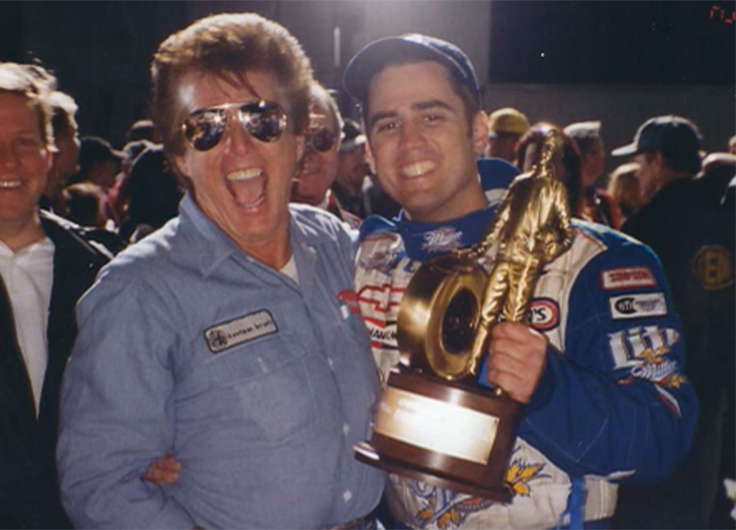
“As the years went on, he told me how proud he was of me, but it wasn't like trying to blow my head up or anything like that. But I have this photo from when I won Pomona in ’98, and it's just me and him and the trophy, and he's way happier than I am. All I ever wanted to do is grow up and race cars like my dad. He was my guy. That's who I looked up to. I feel really fortunate and very blessed that I had him for as long as I did.
"I don't ever argue with fate. When my [Top Fuel] career ended, I was never upset about it because I got to spend more time with my family. Then last year, my dad got laid off from work because he was starting to get too old, so every Wednesday I'd pick him up in my street Nova and we'd go to the Mug-N-Bun drive-in [restaurant] in Speedway [Ind.], a place like the old Bob's Big Boy in California where you drive your car in and they come to the window and take your order, so him getting laid off wasn't a bad thing because I got all of these lunches with my dad. It’s like God gave me that time, and I feel blessed to have had it.
“My dad loved playing with cars. His entire life, he was playing with cars and got everything he could out of life playing with cars until he couldn't. I hope I get to live that kind of life.”
Phil Burgess can be reached at pburgess@nhra.com
Hundreds of more articles like this can be found in the DRAGSTER INSIDER COLUMN ARCHIVE
Or try the Random Dragster Insider story generator


